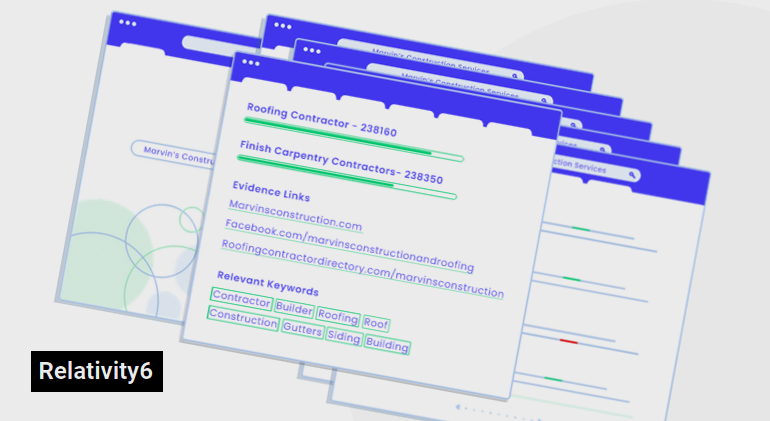
Insurtech Relativity6 has announced the launch of its latest tool, Hazard Flags. New tool uses machine learning algorithms to detect potential risks in commercial insurance submissions, helping insurers streamline their underwriting processes and make more informed decisions about policies.
Relativity6’s AI platform retrieves up-to-the-second information about a business in order to automatically detect its 6-digit NAICS code and verify its existence.
Relativity6 is the fastest NAICS detector on the market, improving commercial underwriting workflow and overall business classification and segmentation.
The Hazard Flags tool allows insurers to quickly and accurately identify potential hazards and red flags in insurance submissions, allowing them to make better-informed decisions about which policies to accept.
The tool analyzes large amounts of data from digital footprints in real time to highlight risks. These risks are flagged for underwriters to review.
We believe that Hazard Flags has the potential to revolutionize the way and speed at which insurers underwrite commercial policies
Alan Ringvald, co-founder and CEO of Relativity6
“By automating a key part of the risk assessment process, we can help insurers reduce their workload and increase their efficiency, allowing them to focus on providing the best possible service to their clients.”
The release comes at a time when insurers are increasingly making use of artificial intelligence to improve their underwriting processes.
The world’s first data and analytics-driven cyber insurance company, Measured Analytics and Insurance, and Relativity6, a real-time search and classification API that provides practical 6-digit NAICS predictions and company existence checks, announced today that Measured Analytics and Insurance has selected Relativity6 platform to provide predictions related to industry classifications as part of their annual report.





